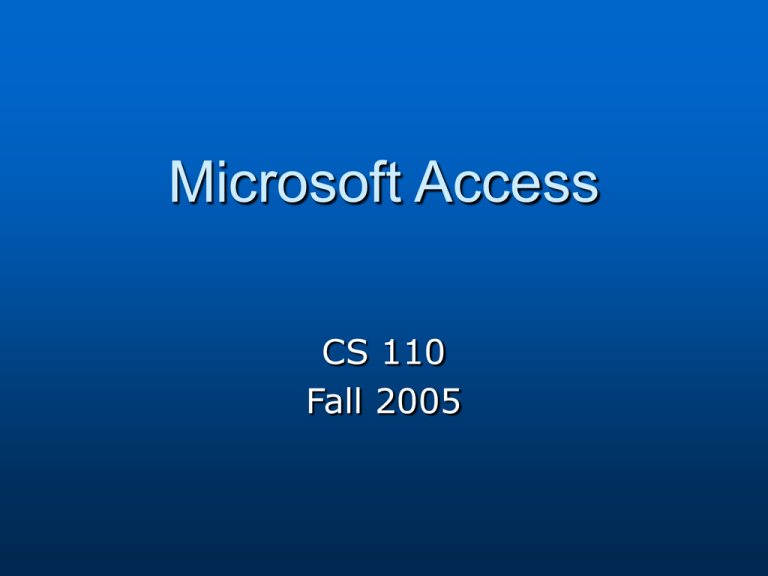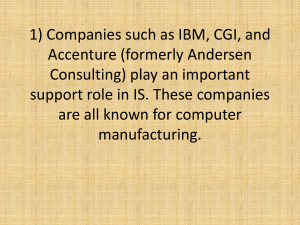Microsoft Access CS 110 Fall 2005
advertisement

Microsoft Access CS 110 Fall 2005 Entity Relationship Model Entities • Principal data object about which information is to be collected employees, projects, invoices, etc. Relationships • An association between two or more entities employees are assigned to projects Entities Entities have attributes • name, ID, key May be a way to uniquely identify an instance of an entity May be a non-unique characteristic of an entity instance Relationships Relationships have connectivity and cardinality • One-to-one – at most one instance of entity A is associated with one instance of entity B • One-to-many – one instance of entity A is associated with zero, one, or many instances of entity B • Many-to-many – one instance of entity A is associated with zero, one, or many instances of B (and vice versa) Building a data model Identify entities and relationships What are the entity attributes Confirm the desired query results can be generated What makes an object an entity or an attribute? “Employees work on projects” Are employees an entity or an attribute of projects? Analyze narratives from users, meeting notes, policy and procedure documents, … Consider database properties Normalization Put data into table form by removing repeated groups and duplicated data • A theoretical definition based on logic exists Example A company obtains parts from multiple suppliers Each supplier is in a city A city can have more than one supplier Each city has a status code Each supplier may provide many parts Example s#: supplier ID status: city status city: name p#: part ID qty: quantity Redundant data City and status repeated for each part Update anomalies Problems that occur when information is inserted, deleted, or updated Caused by redundant data Insert anomalies Cannot add new supplier w/o adding part supplied Delete anomalies Deleting a row loses information about quantity/part AND supplier Update anomalies If supplier s1 moves from NY to London, six rows must be updated Refinement Following rigor of normalization, tables are split/merged to reduce anomalies Primary, secondary, and foreign keys Primary key: attribute that uniquely identifies all other attributes in a row Secondary key: attribute that identifies a set of records Foreign key: attribute in one table that matches the primary key of another


